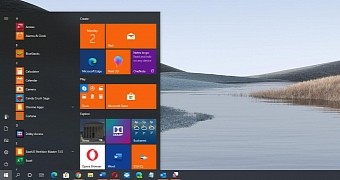Back in 2012, Microsoft made a decision which not only that took everyone by surprise but also created so much frustration in the existing Windows userbase: it removed both the Start menu and the Start button from the desktop.
Windows 8 was the first modern operating system released by the software giant, and in addition to the Microsoft Store, it also embraced this change that many considered a huge mistake.
And while the Start menu itself was completely removed, the Start menu was replaced with a Start screen that expanded to the entire screen and which, at least at first glance, seemed more appropriate for touch-capable devices rather than for desktops. It was also the first time live tiles made their way from Windows phones to the desktop, and this controversial Start screen was the interface bringing them to life in Windows 8.
The lack of a Start button and Start menu was rather quickly resolved with the help of third-party software, such as Classic Shell, which successfully brought both back with a few extras too, including more skins, options to customize the Start button, and so much more.
It goes without saying that not everyone was a big fan of third-party software required to bring back a native Windows feature, so Microsoft did hear the message and restored the Start button in Windows 8.1, the first major update for Windows 8. The Start menu, however, was still unavailable, and the Start screen was the preferred option going forward.
Fast forward to July 2015 and here’s Microsoft launching Windows 10 with a modern Start menu that combines several parts of the original design in Windows 7 with elements introduced in Windows 8 on the Start screen, such as live tiles.
Since the first version of Windows 10, the Start menu hasn’t changed too much, and the improvements that Microsoft introduces occasionally are rather subtle. Despite rumors of more updates planned for the Start menu, such as the removal of live tiles, this feature has reached a point where its evolution seems to stagnate rather than advance together with the operating system.
In the last few weeks, several of our readers told me that the Start menu is a more or less obsolete Windows feature, and the way they use Windows 10 is with their apps pinned to the taskbar. Truth be told, I do this too, and I actually rely on the taskbar to launch apps more than on the Start menu itself.
On the other hand, most of the time I use the Start menu for searching, and this is because Microsoft has actually merged the Start menu and search feature in Windows 10. And of course, I use keyboard shortcuts, such as Windows key + R, to run certain commands faster, as well as Windows key + X to launch the Start button “context menu” where more advanced applications are located.
So while I occasionally use the Start menu, its purpose on my device has changed from launching apps to searching for files and programs, something that can very well be done from the built-in search too.
Which gets us to what those readers told me: isn’t the Start menu itself a redundant feature now in Windows 10?
No matter the answer, I still don’t think that the Start menu should go away, as those not as tech-savvy as others would really have a hard time getting around the operating system. The Start menu is a key component of the familiar Windows experience, and removing it would technically bring back the Windows 8 saga all over again.
So that’s why I’m asking you, the more tech-savvy user: is the Start menu a must-have Windows feature? Can you survive without it? And more importantly, can you imagine the future of Windows 10 without it?
Let me know what you think in the box after the jump.

 14 DAY TRIAL //
14 DAY TRIAL //